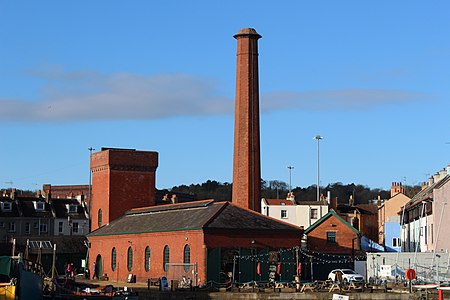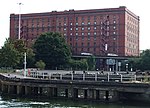Underfall Yard
1809 establishments in EnglandBoatyardsBristol HarboursideBritish boat buildersCulture in Bristol ... and 12 more
Grade II* listed buildings in BristolGrade II listed buildings in BristolHistory of BristolPort of BristolPorts and harbours of the Bristol ChannelRiver navigations in the United KingdomScheduled monuments in BristolShipbuilding companies of EnglandTourist attractions in BristolTransport in BristolUse British English from February 2023Works of Isambard Kingdom Brunel

The Underfall Yard is a historic boatyard on Spike Island serving Bristol Harbour in England. Underfall Yard was commonly referred to as "The Underfalls" and takes its name from the underfall sluices. The construction was completed in 1809 under the direction of William Jessop and substantially improved by Isambard Kingdom Brunel in the 1830s. Restored in the 1990s, Underfall Yard has been designated as a scheduled monument and from the 1970s onward many of the buildings at Underfall Yard have been given Grade II Listed Building status. The harbour and its equipment are still maintained, and house a number of maritime related companies.
Excerpt from the Wikipedia article Underfall Yard (License: CC BY-SA 3.0, Authors, Images).Underfall Yard
Avon Crescent, Bristol Hotwells
Geographical coordinates (GPS) Address Website External links Nearby Places Show on map
Geographical coordinates (GPS)
| Latitude | Longitude |
|---|---|
| N 51.4468 ° | E -2.6174 ° |
Address
Underfall Yard
Avon Crescent
BS1 6XQ Bristol, Hotwells
England, United Kingdom
Open on Google Maps










